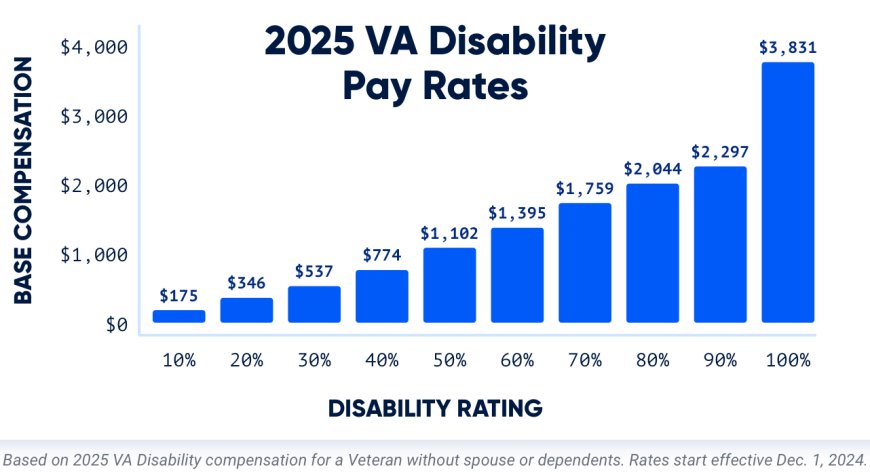Understanding the 2025 VA Disability Compensation Rates & What They Mean for Veterans
Veterans get a 2.5% VA disability increase in 2025. View updated rates, benefits, and why re-evaluating your claim matters this year.

Veterans receiving disability compensation in 2025 will notice a welcome change: a 2.5% cost-of-living adjustment (COLA) was officially applied starting January 1st. This increase, aligned with Social Security COLA standards, helps veterans keep pace with rising living expenses, without requiring any action on their partprovided they already have an accurate disability rating.
Why This Adjustment Matters
The purpose of this yearly update is to ensure that disability payments continue to reflect economic conditions. As inflation pushes up the cost of everyday goods and services, this increase helps maintain the value of the benefits earned through military service.
Compensation is still based on a veterans disability rating and dependent status, but the raised figures offer some much-needed financial breathing room, especially for those living on fixed incomes.
2025 Monthly VA Disability Rates Overview
Below is a simplified version of how the monthly payments break down depending on disability rating and family status:
| Dependent Status | 10% | 50% | 100% |
|---|---|---|---|
| Veteran Alone | $175.51 | $1,102.04 | $3,831.30 |
| With 1 Child | $1,173.04 | $3,974.15 | |
| With Spouse | $1,208.04 | $4,044.91 | |
| Spouse + 1 Child | $1,287.04 | $4,201.35 | |
| Spouse + 2 Parents + 1 Child | $1,457.04 | $4,544.23 |
Additional allowances:
-
Each child under 18: $106.14 (100% rating)
-
Disabled spouse: $195.92 (100% rating)
-
Child over 18 in school: $342.85 (100% rating)
This structured support is a vital resource for veterans and their families, particularly those living with high levels of disability.
More Than Just a Monthly Payment
Achieving a 100% disability rating can unlock several key benefits beyond the compensation check:
-
Full Medical Coverage: Inclusive care for service-connected conditions.
-
Education Assistance: Support for dependents pursuing higher education.
-
Housing Benefits: Grants for home adaptations and property tax relief (varies by state).
-
Family Health Coverage: Through programs that extend care to dependents.
-
Travel & Recreation Perks: Reduced travel expenses for medical visits and fee-free entry to national parks.
-
Career Services: Priority placement and vocational rehab resources for those re-entering the workforce.
Dont Let Inaccurate Ratings Hold You Back
While the COLA helps, it doesnt address the issue of incorrect or outdated disability ratings. Many veterans qualify for higher compensation but havent yet submitted new documentation or sought a re-evaluation.
Submitting a Disability Benefits Questionnaire (DBQ) is a key step. This form, when completed correctly with proper evidence, can greatly strengthen your case for an increase. Unfortunately, the process can feel overwhelming, which is why many veterans avoid it.
Timing Matters
With this years increase already active, now is a smart time to begin organizing records, gathering new medical evidence, and preparing your claim. The process of submitting for a re-evaluation or new claim may take monthsstarting early helps avoid delays in receiving the benefits you may be entitled to.
Whether you're aiming for a higher rating or just getting started with your first claim, remember: the compensation system is designed to support you. The key is to submit the right evidence, clearly explain your current condition, and advocate for the benefits your service and health situation warrant.





































